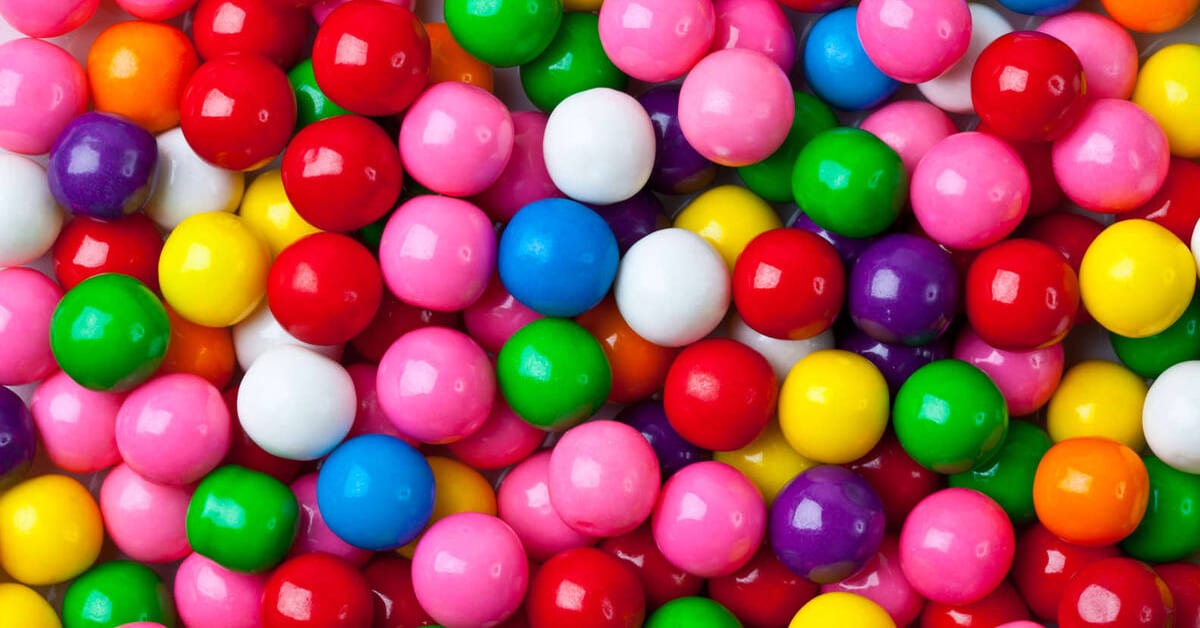7 Different Types Of Bubble Gum
Bubble gum is a favorite treat for many people. They come in various flavors, colors, shapes, tastes, textures, and varieties. Different types of bubble gum have a unique gum base that has been modified to meet production needs and technical constraints.
Depending on the kind of product, selecting the proper gum base is crucial since it has a direct influence on production performance, efficiency, and product quality. Below, we will briefly explore the types of bubble gum available today and see what options we have on the market.
Please leave a review or any memories of this snack in the comments at the bottom of this page. Thank you!
Names of 7 Different Types Of Bubble Gum
- Cut and Wrap Gum
- Ball Bubble Gum
- Center-Filled Gum
- Stick Gum
- Dragée Gum
- Gum-centered Candy
- Tube Gum
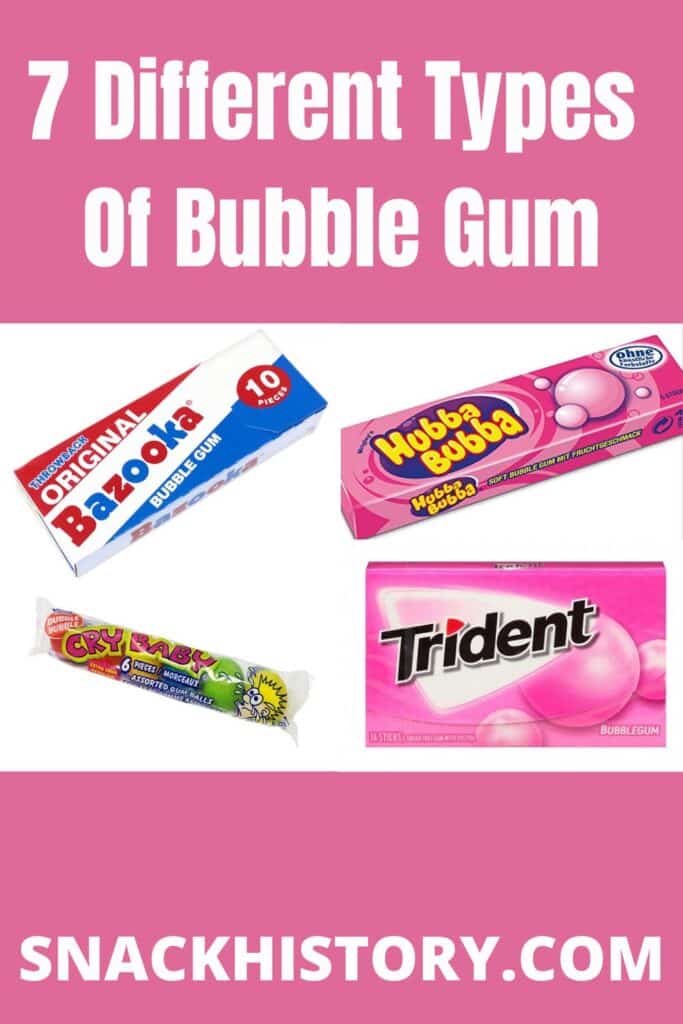
Brief History of Bubble Gum
While chewing gums managed to become widely popular at the beginning of the 20th century, it took several decades until the first formula for readily usable chewing gum was developed. Walter E. Diemer (1904–1998), an accountant for the chewing gum manufacturer Fleer who also dabbled in experimenting with chewing gum formulas in his leisure time, accomplished this achievement.
The 20-year-old formula of Frank Henry Fleer, the company’s creator, was improved by Diemer in 1928 so that it would be more resilient while in the bubble stage and would not adhere to the teeth, lips, or mouth after the bubble broke.
In their first year on the market, Fleer’s now-famous Dubble Bubble chewing gums sold $1.5 million, thanks to his invention. It garnered the attention of rivals, who crowded the market with their own bubble gum products.
After introducing Dubble Bubble so many years ago, the bubble gum industry is still going strong today. Thanks to the enormous range of products available, consumers of all ages may now enjoy popping their gum balloons wherever they are.
Not all current chewing gum brands have a recipe that fully supports this activity, even though the majority of them may be used to bust bubbles. According to studies, people who enjoy blowing bubbles tend to buy gum that feels more elastic and whose gum does not get stuck on their lips.
Having a fragrance that swiftly dissipates is another crucial characteristic of chewing equipment designed particularly for the routine production of bubbles. This is done in order to prevent users from leaving a strong flavor on their lips after popping bubbles.
7 Types Of Bubble Gum
Different types of bubble gum include: cut and wrap gum, Ball Bubble, center-filled, dragée, stick gum, gum-centered candy, and tube gum. Each of them has a different combination of ingredients and specific characteristics.
1. Cut and Wrap Gum
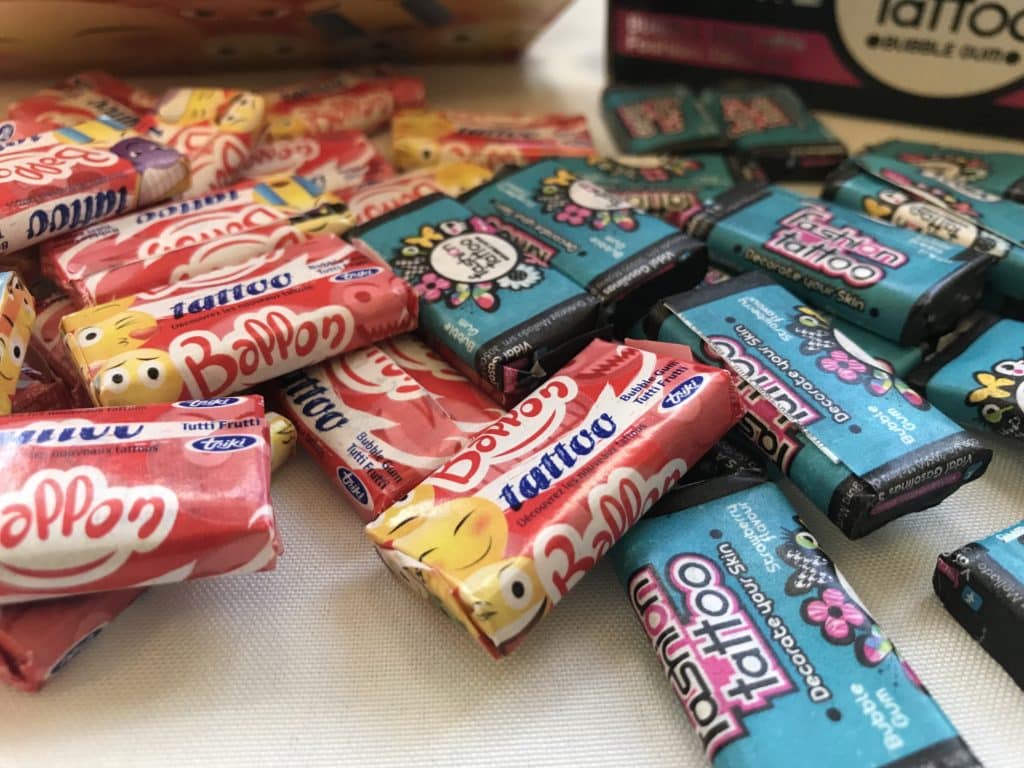
To survive the stretching that occurs in the cooling tunnel, the gum bases for this kind of line must have a specific amount of flexibility. Due to the larger piece size, these particular types of bubble gum formulations should be softer than conventional chewing gums.
This is accomplished by using additional liquids in the composition, which include glucose or liquid sweeteners.
2. Ball Bubble Gum
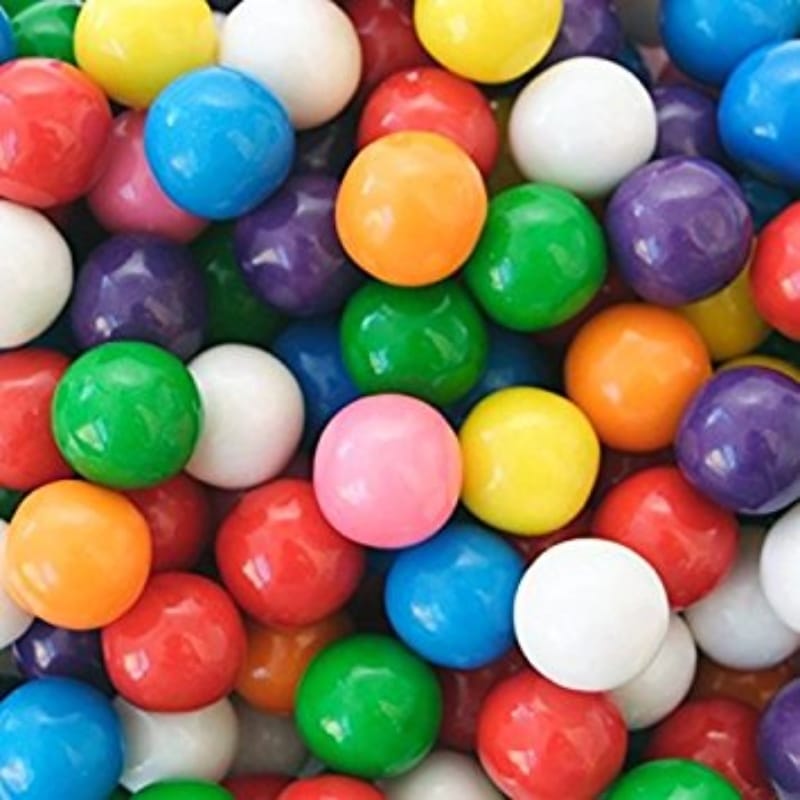
This chewing gum is shaped like a ball. It is among the most commonly used types of bubble gum. To preserve their shape and stop leaks, gum bases for products need to be somewhat elastic, especially if it has a soft filling. The core needs to be sufficiently tough to endure the coating procedure after it has hardened.
To achieve the aforementioned hardness and reduce flexibility, Ball chewing gum recipes are often drier, which means that they have lower glucose or liquid sweetener content.
3. Center-Filled Gum
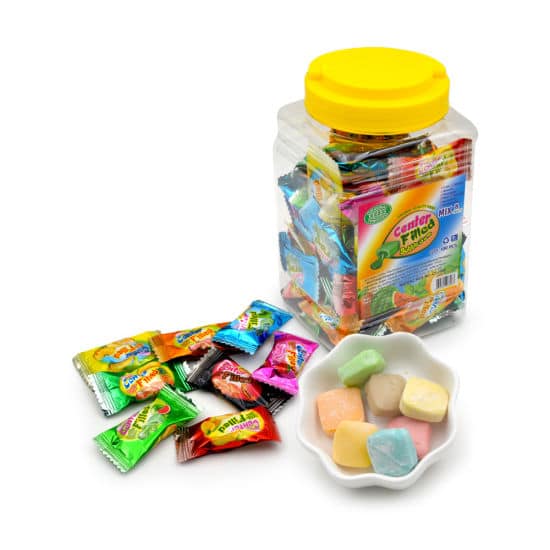
The gum bases for stamped chewing gum should have certain properties: enough elasticity to resist the equalizing stage when the stretching occurs and the right plasticity to quickly adopt the shape formed by the special machine. This type of bubble gum has a core filled with a soft mass that is typically filled with a pleasant liquid.
The chewing gum should have a gum base percentage range that permits proper forming and a good seal. Deformations in the final product will result from either an excess or a shortage of the gum base composition.
4. Stick Gum
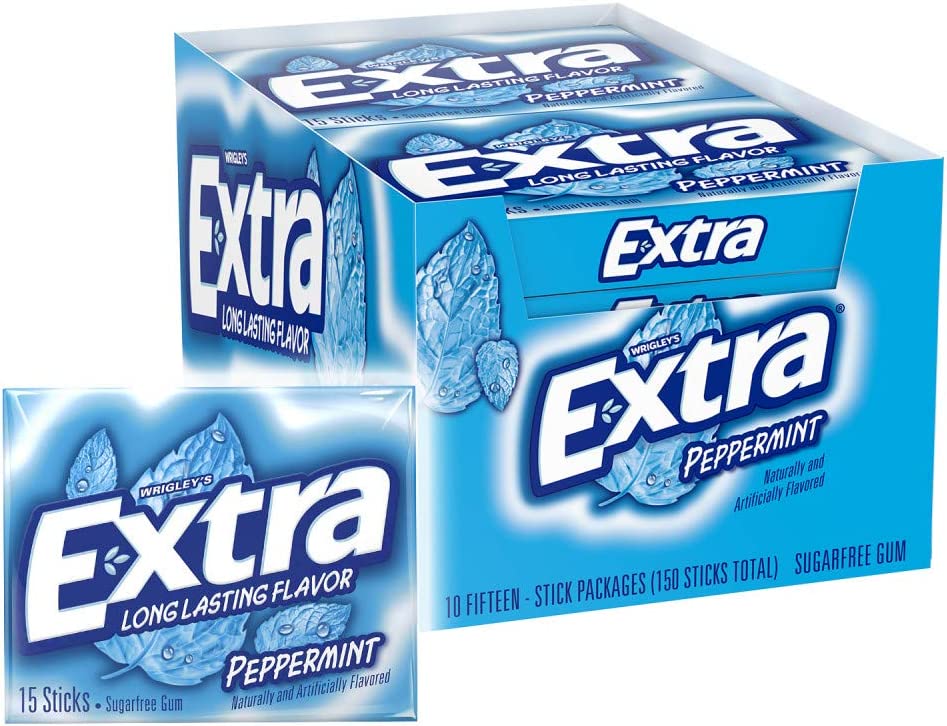
These types of bubble gum are thin, flat slabs that have a rectangular shape. The gum bases should be sufficiently plastic to be molded by the rolls and, following the curing period, sufficiently hard to be wrapped.
Compared to cut-and-wrap gums, laminated chewing gum often has a greater gum base percentage. Additionally, the amount of glucose must be modified to provide the required hardness for the packing process while preserving enough elasticity to guarantee that the pieces do not shatter when bent.
5. Dragée Gum

The most widely used type of chewing gum is dragée. Dragée gum comes in blister packs and has a pillow-like form. Similar to sticks, gum bases for these types of bubble gum should have the required flexibility to allow them to be shaped by the rollers and, following the curing period, become hard enough to resist the coating process. Chewing gum is often fashioned in pellet form.
6. Gum-centered Candy
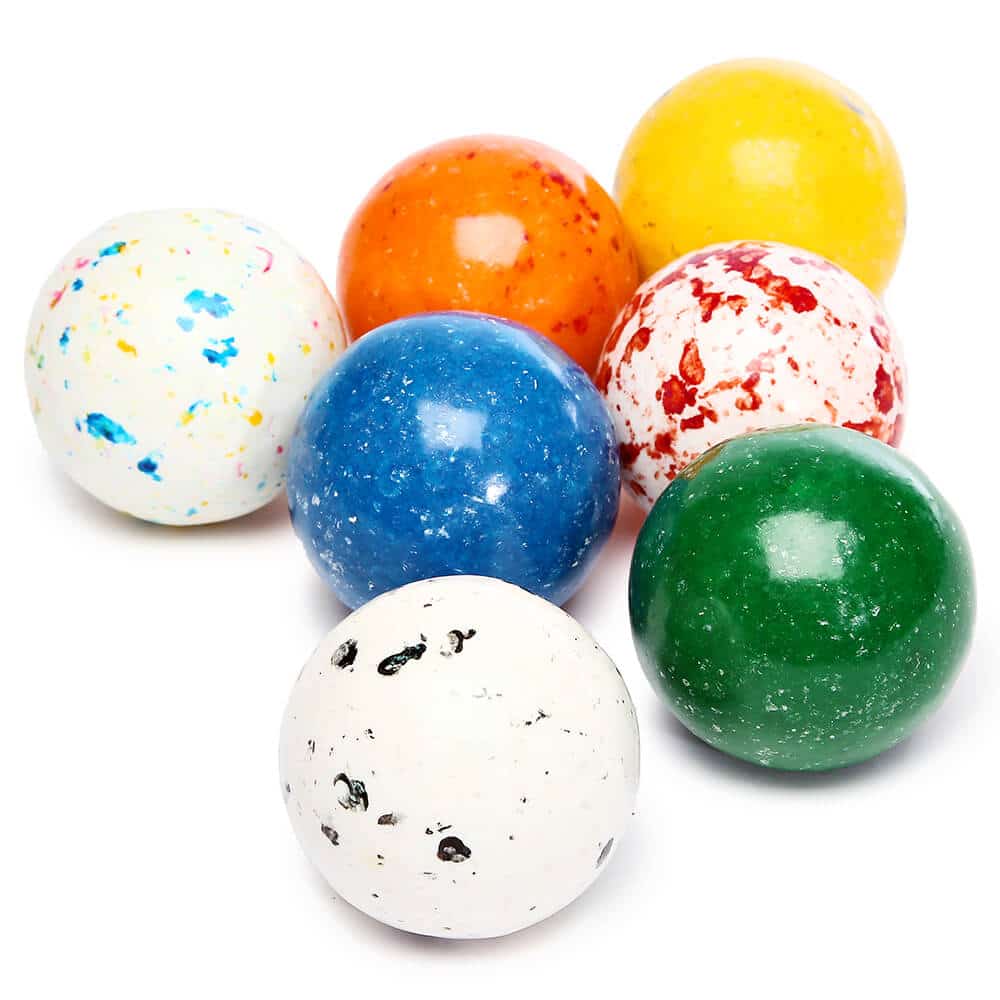
Typically, any basis for bubble gum may be used to make this kind of product. Gum bases with lesser viscosities, on the other hand, could be trickier to work with since they can become liquid at the high temperature of the candy.
7. Tube Gum
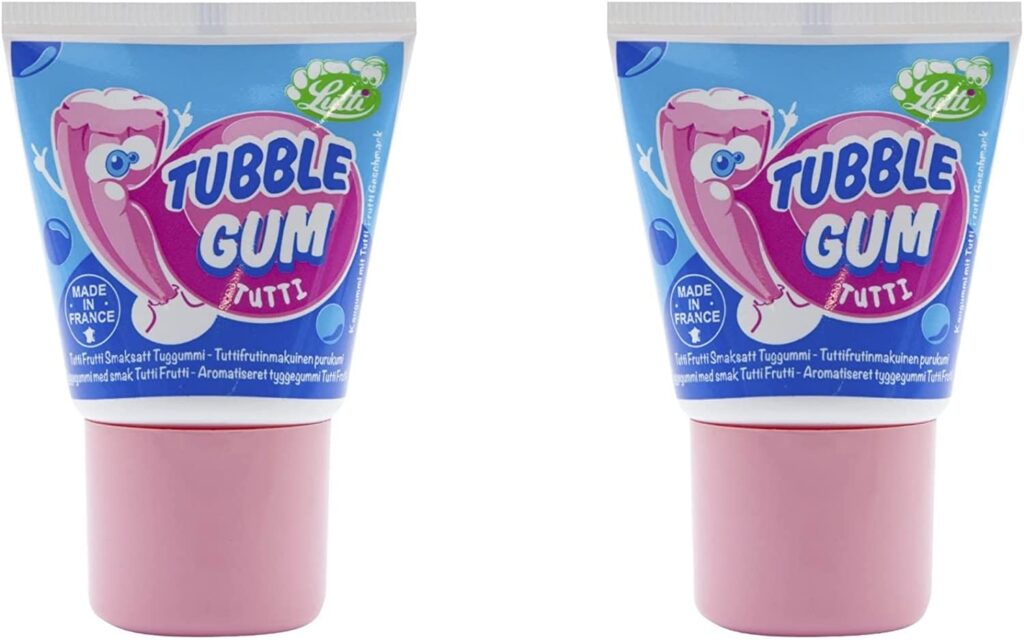
Tube gum, often known as spaghetti gum, is an extremely soft bubblegum that is packaged in a tube. Soft, squeezable gum is contained in a tube like toothpaste.
Most Famous Brands Of Bubble Gum
1. Trident
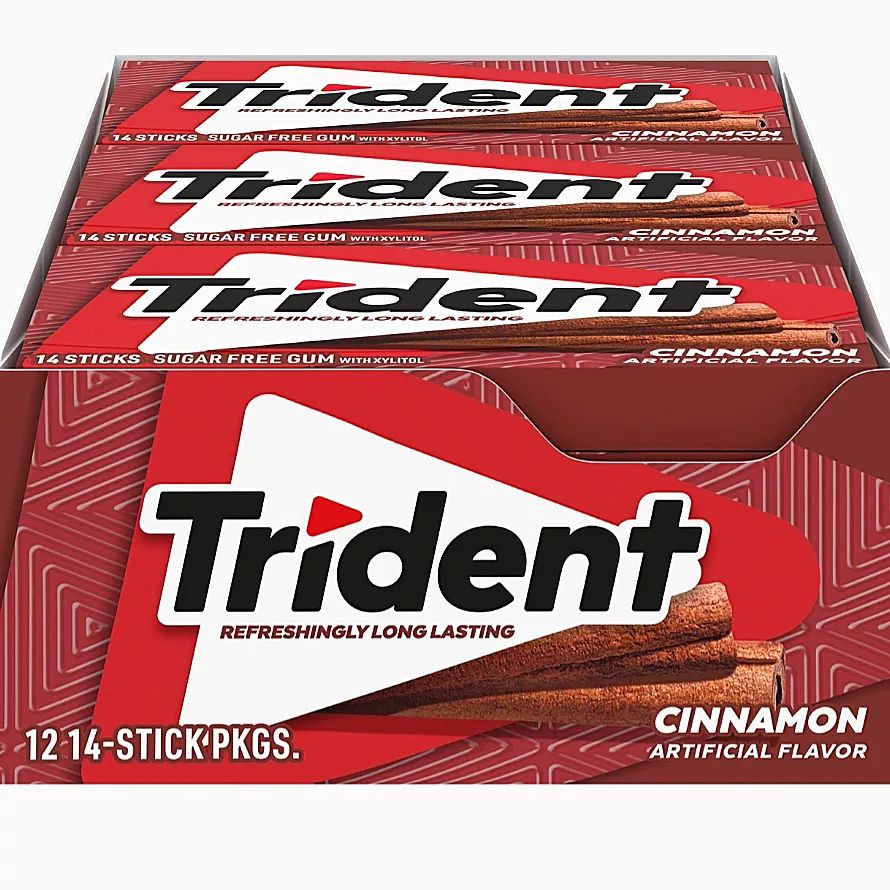
Some of the earliest types of bubble gums that used sugarless formulas were those under the Trident brand. In order to prevent cavities from forming in your teeth and mouth, they employ Xylitol.
Trident gums also have beneficial ingredients like vitamins. The most widely used types have fruit flavors. The Trident Layers brand even combines the flavors of several fruits, most notably strawberry and tangerine. The editions designed specifically for popping bubbles are Cool Bubble in the Trident White brand and Bubble Gum in the Trident Xtra Care brand.
2. Hubba Bubba Bubble Gum
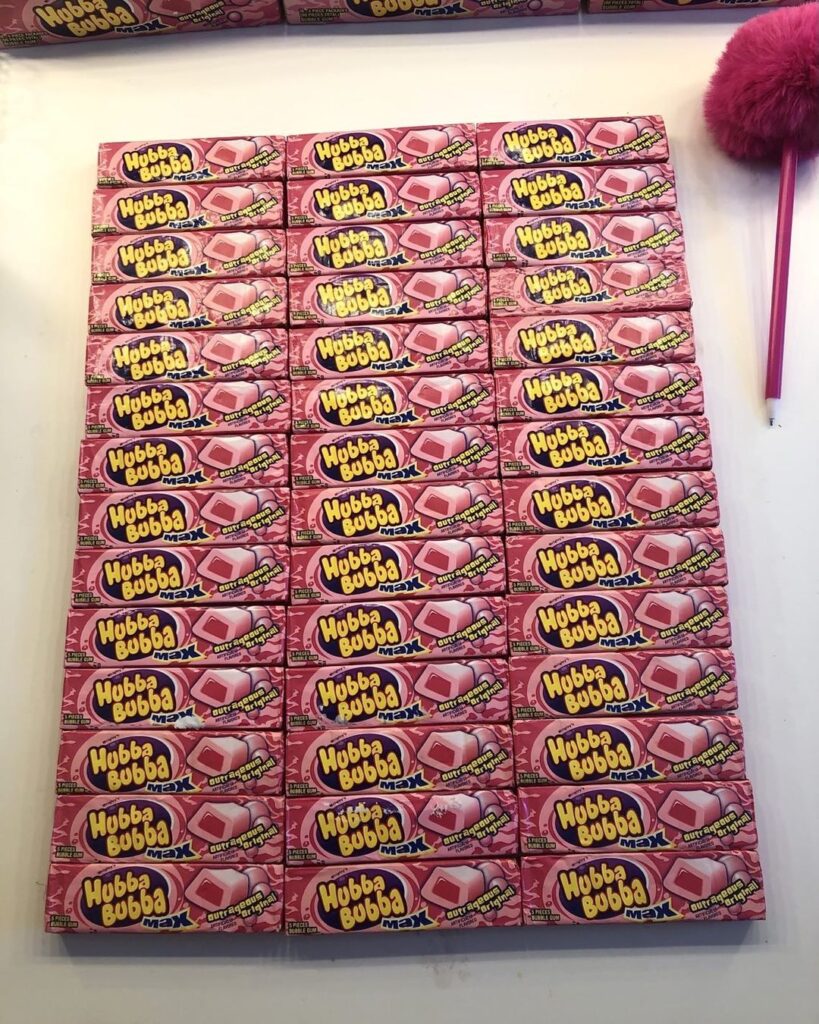
Bubble gum under the Hubba Bubba brand is made by Wm. Young Wrigley Company, a division of Mars, Inc. The bubble gum was first sold in the US in 1979, and it got its name from the World War II military term for approval, “Hubba Hubba.”
The main marketing ploy for the gum is that because it is less sticky than other types of bubble gum, it is simpler to peel off the skin after a bubble pops. When Hubba Bubba was initially advertised, its flavor, frequently referred to as the “original,” was comparable to that of other gums. However, over time, new tastes have been created.
3. Bazooka Bubble Gum
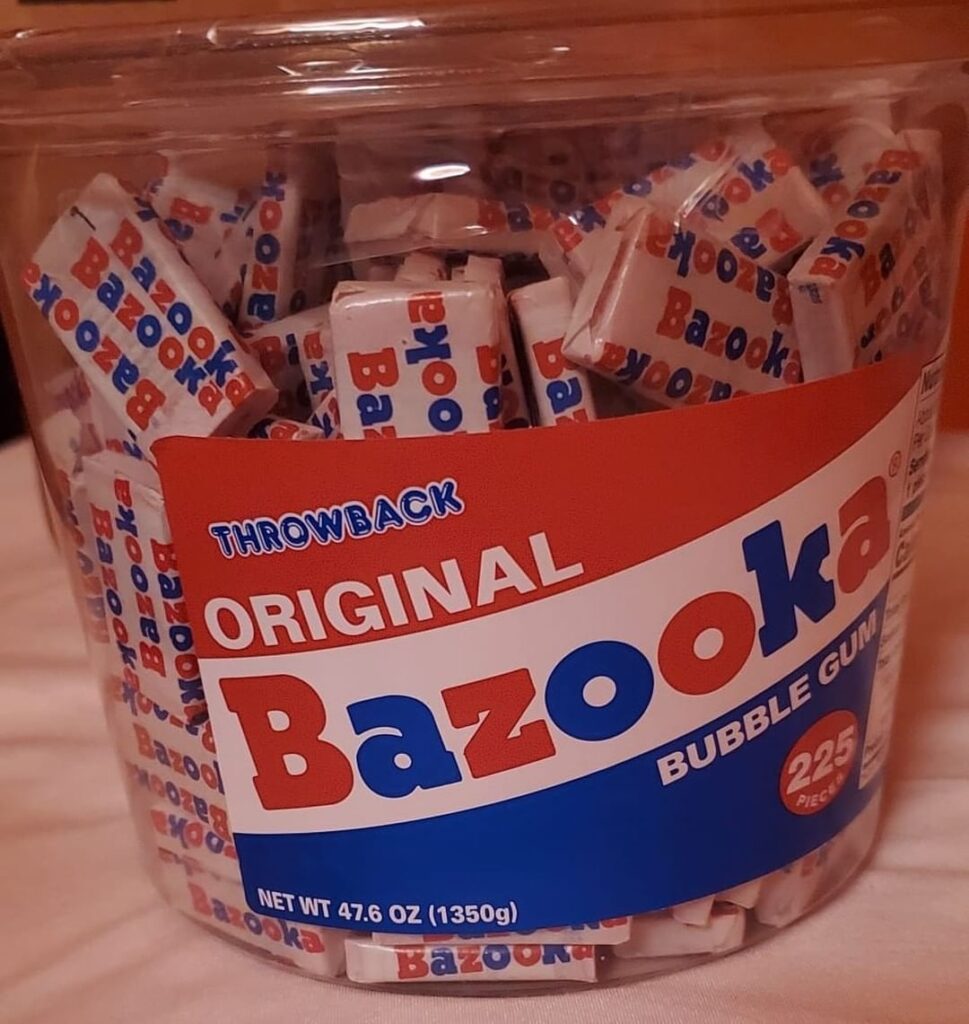
The American brand of chewing gum known as Bazooka was first released in 1947. It is a product of “Bazooka Candy Brands,” which was manufactured by the Topps company. The company was acquired by Fanatics in 2022.
The Topps Company of Brooklyn, New York, launched the first Bazooka bubble gum campaign in the United States immediately after World War II. The chewing gum was most likely named after the American army’s rocket-propelled weapon, which was named after a musical instrument.
The chewing gum was marketed for one penny and came in red, white, and blue packaging. Starting in 1953, small comic strips depicting the character “Bazooka Joe“ were added to the gum box. Bubble gum came in collectible comic-strip wrappers and, over time, 1535 distinctive “Bazooka Joe” comics were created. There are no longer any older Bazooka Joe comic strips that were larger.
4. Cry Baby Bubble Gum
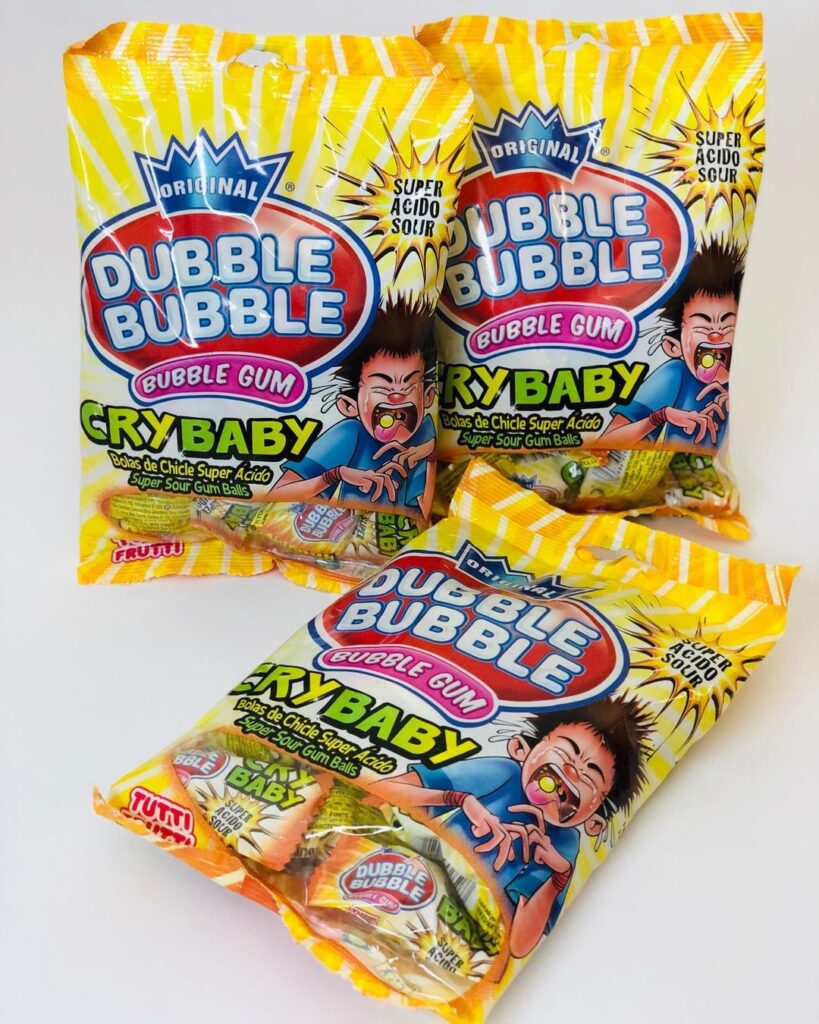
Chewing gums vary greatly from one another, and there are many different types of bubble gum. Among all the bubble gums, Cry Baby Bubble Gum has a unique shape and a sour, fruity flavor. The Cry Baby brand chose to almost make people cry with the initial sour taste that goes along with their chewing gums, which are flavored with lemon, cherry, green apple, blue raspberry, and orange.
While some brands aim to please users with sweet fruity flavors or to refresh their mouths and airwaves with a strong shot of peppermint, Cry Baby Gums have various flavors. The sour coating that Cry Babies are most known for quickly goes away when the gum is eaten. According to the product’s label, chewed gum retains its sour flavor for 40 seconds.
Cry Baby is a sour bubble gum brand sold in the United States under a license from Tootsie Roll Industries. The person who came up with the original name of Cry Baby Gum is David Klein.
Production of Cry Babies often called Tear Jerkers, started in 1991. The sweets were first created by the Philadelphia Chewing Gum Corporation in Havertown, Pennsylvania, and were subsequently bought by Tootsie Roll Industries, the company that makes them today.
Bottom Line – Types Of Bubble Gum
Bubble gum is chewing gum that has been specifically designed to blow bubbles. The ingredients and manufacturing methods make those sweet and sour treats perfect. Bubble gum comes in many different colors, types, flavors, and textures.
It is all a matter of taste, and every individual may prefer a specific one. Among the types of bubble gum explored above, which is your favorite and why? Share your thoughts in the comments section below!

Nato is a content writer and researcher with a background in psychology. She’s passionate about writing about the candy industry and exploring the cultural significance of sweets and treats. She believes that the stories behind our favorite snacks can reveal a great deal about our values.
Please leave a review or any memories of this snack in the comments below. Thank you!
Click here for a full A-Z list of Snacks and Candy
